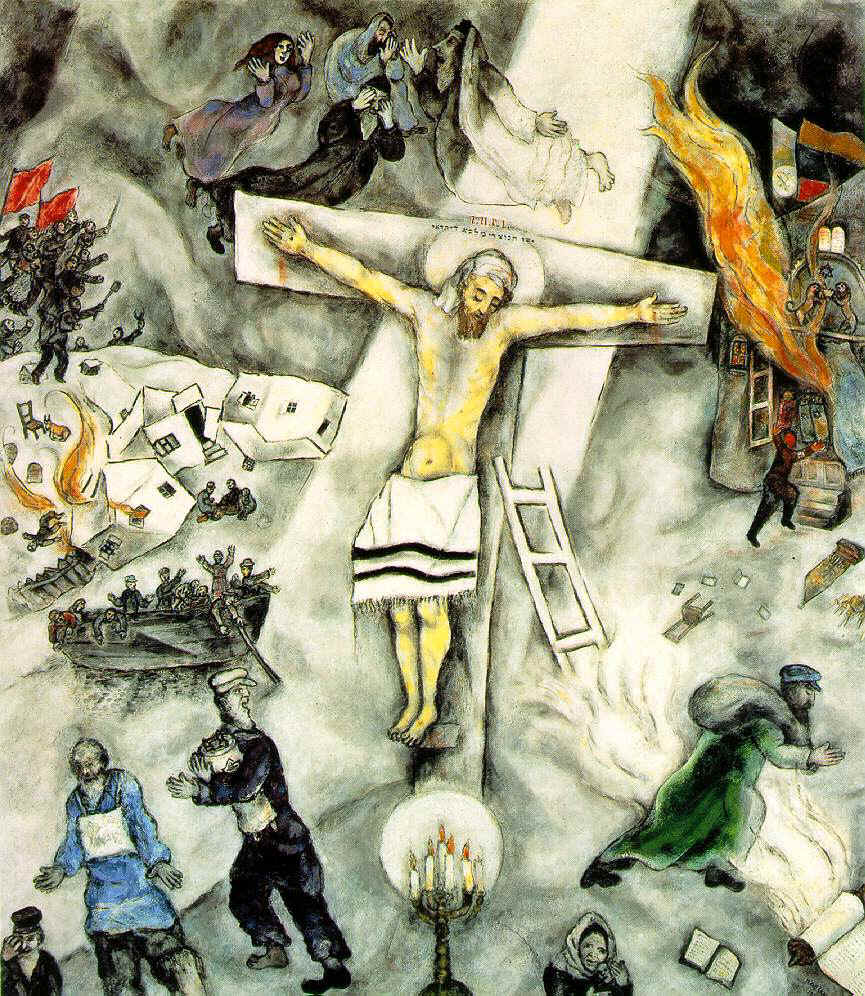
Marc Chagall, White Crucifixion
I have found several passages in an interview between Northrop Frye and the Australian scholar David Lawton entitled “Archetype and History” (1986) that are relevant to the relationship between the work of Frye and Robert Alter, the subject of a recent discussion on this blog.
Responding to a question about biblical form-criticism, Frye says “I always feel there is something getting away from me in all this, that Robert Alter and his kind know things that I don’t know—I don’t know what, I haven’t yet discovered what they are from their books.” In relation to this rather double-edged passage, Jean O’Grady draws attention to a less polite comment in the Late Notebooks: “The Art of Biblical Narrative my ass: there’s no such thing as Biblical narrative: there’s only the Bible’s narrative with a lot of sub-narratives.” (Robert Alter published The Art of Biblical Narrative in 1981.)
Lawton asks Frye whether he distinguishes sharply between the Christian Bible and the Jewish Bible, and Frye replies:
In imagery and in metaphor it seems to me that Judaism and Christianity are identical. But doctrinally a religion which accepts incarnation is very different from a religion which does not, and while I think I can come to terms with the Jewish conception of the Bible, it’s just possibly the prejudices of my upbringing that I feel that the Bible is beheaded if it doesn’t have the New Testament. I just can’t get over that. . . .
I think I managed to get over the gap in the course on the Bible I taught at Harvard, where I had something like four hundred and twenty students and a fair number of them were Jews. I tried to explain something of the difference between the two conceptions and the way in which Christianity had used Jewish conceptions in ways that Jews would think intolerable but nevertheless did fit consistently the structure of Christianity. They went off and held special sessions themselves to discuss the Christian interpretation of the Jewish scriptures, and they’d come out shaking their heads and saying, “Clever buggers these Christians.”
